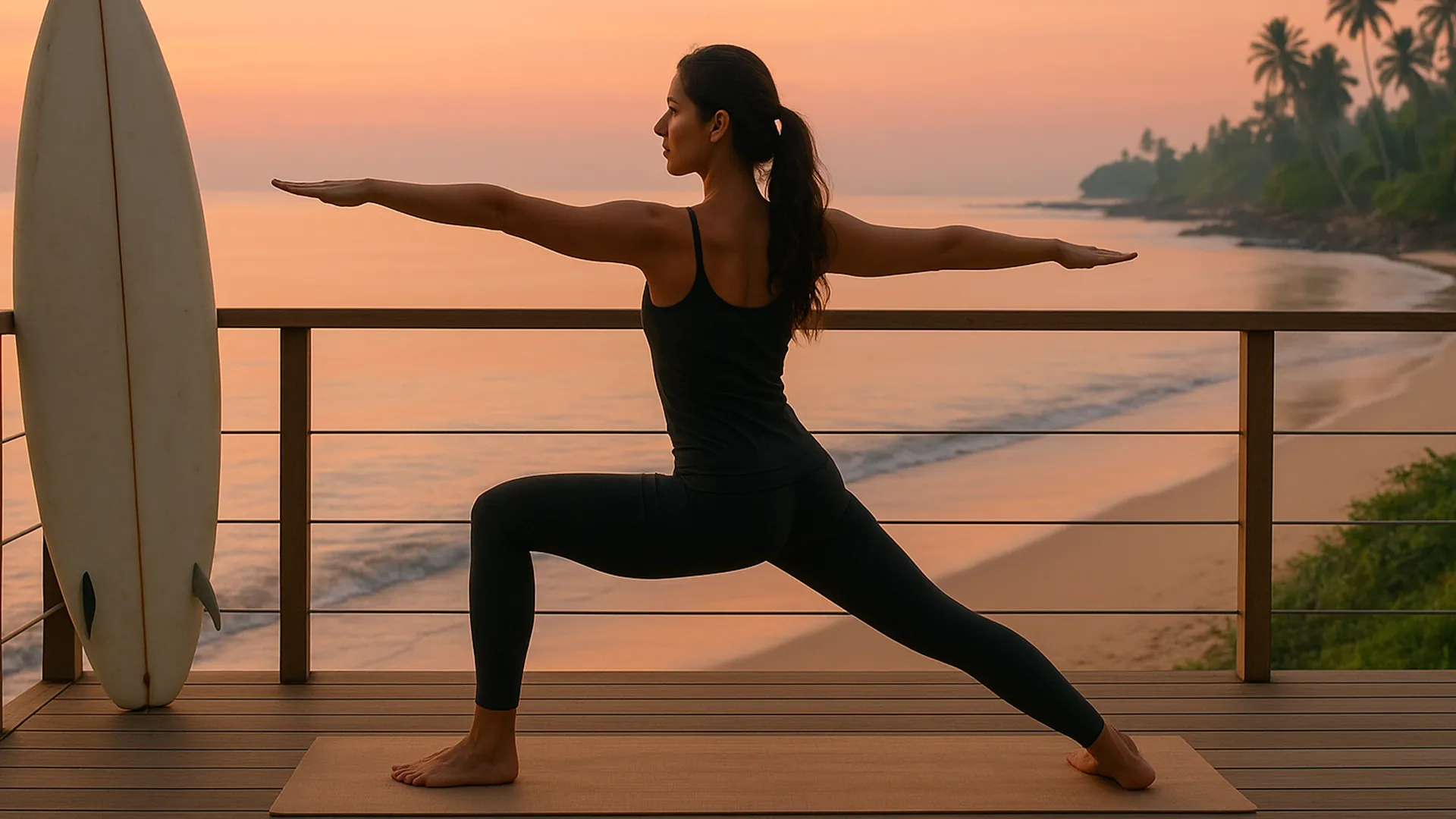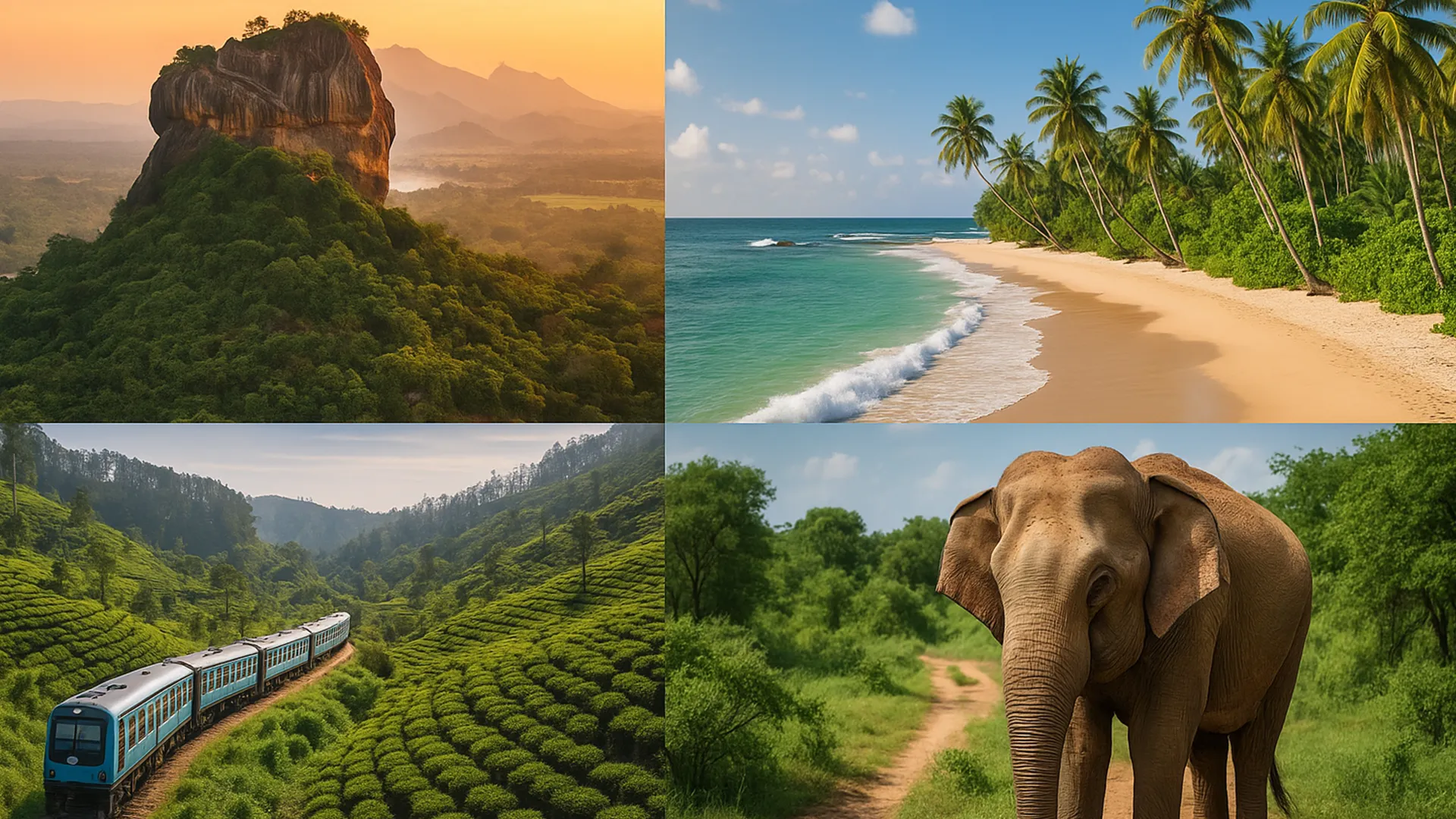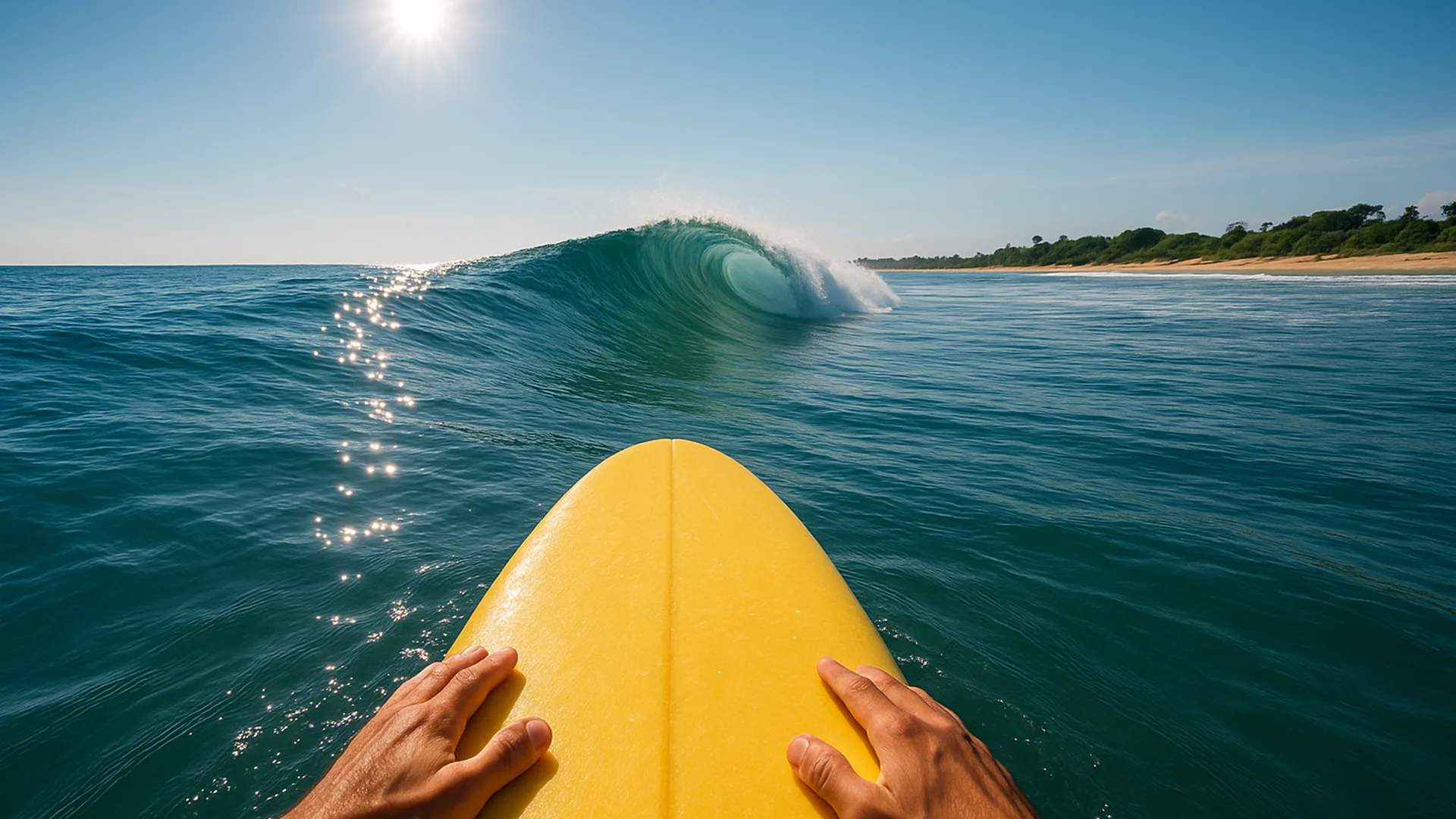
The connection is innate, a symbiotic relationship between two practices that seem, on the surface, to be very different. One is a dynamic dance with the raw power of nature; the other is a still, internal journey of breath and body. Yet, surfing and yoga are two sides of the same coin, both requiring core strength, balance, flexibility, and, most importantly, a focused, present mind. Nowhere is this connection celebrated more holistically than in Sri Lanka, where the environment itself seems designed to foster this perfect balance.
Imagine starting your day not with an alarm clock, but with the soft, melodic chanting from a nearby temple, mingling with the sound of crashing waves. You roll out your mat in an open-air shala, surrounded by palm trees, the morning sun warming your skin. Your yoga practice here is not just exercise; it is a ritual of preparation. The sequences are designed with the surfer in mind: deep hip openers like Pigeon Pose to counteract the constant pop-up motion, core-strengthening holds like Boat Pose to build stability on the board, and shoulder openers to ease the strain of paddling. But beyond the physical, the practice cultivates the mental toolkit you need for the ocean. Conscious breathing (pranayama) is training for when you’re held under by a wave, teaching you to stay calm and conserve energy. The focus on balance in poses like Tree Pose translates directly to finding your center on a moving surfboard.
After an hour of centering your body and mind, you head to the beach, feeling loose, focused, and energized. The transition from the stillness of your mat to the dynamic energy of the ocean is seamless. The patience you cultivated in holding a pose is now applied to waiting for the right wave. The awareness of your body’s alignment is now used to fine-tune your stance on the board. A surf session after yoga feels different. You’re more in tune with the water, more responsive, and less likely to fight against the wave’s energy. You find yourself flowing with it, applying the same principles of grace and presence you learned on the mat. When you wipe out - which you will - that yogic breath kicks in, keeping panic at bay.
The afternoons are for integration. This is the time for a deep, restorative yoga session or a guided meditation, perhaps focusing on the parts of the body that have been worked the hardest. It’s a chance to stretch out sore muscles, release tension in the upper back and shoulders, and allow the body to recover and repair. This conscious recovery is what allows you to surf day after day without burning out. It turns a surf trip from a purely physical challenge into a true wellness retreat. This holistic approach is what sets Sri Lankan surf and yoga camps apart. They are built on the understanding that to perform well in the water, you must take care of your body and mind out of the water.
The setting itself is the final, crucial element. Sri Lanka’s natural beauty provides a constant, breathtaking backdrop for this journey. Practicing yoga as the sun rises over the Indian Ocean, or meditating to the sound of rustling coconut palms, adds a profound layer of connection to nature. The island’s spiritual heritage, visible in its countless temples and the daily rituals of its people, infuses the air with a sense of peace and mindfulness. You leave a surf and yoga retreat not just with a better pop-up or a deeper stretch, but with a renewed sense of inner calm, a body that feels both powerful and supple, and a lasting connection to the rhythmic pulse of the ocean and your own breath. It’s a transformative experience that redefines what a vacation can be.
Powered by Froala Editor
Related Insights & Articles

September 18th 2025
Tuk-Tuk Tales: Conquering the Coast in Sri Lanka's Iconic Three-Wheeler
No vehicle is more synonymous with Sri Lanka than the humble, buzzing, gloriously colorful auto-rickshaw, universally known as the tuk-tuk. It’s the bloodstream of the nation, zipping through crowded cities, puttering down rural lanes, and lining up on every beachfront. For most tourists, it’s a cheap taxi. But for the truly adventurous, hiring your own tuk-tuk for a multi-day journey along the coastline is the ultimate way to embrace the slow, sensory, and wonderfully chaotic rhythm of Sri Lankan travel.
The adventure begins with the rental itself. You’ll find guesthouses and dedicated rental shops in tourist hubs like Negombo, Hikkaduwa, or Mirissa, offering tuk-tuks for daily or weekly hire. They’ll give you a brief overview of the controls - which is essentially an accelerator, a brake, and a handlebar to steer - and a pat on the back. It’s astoundingly simple to drive. The maximum speed is low (which is a safety feature in disguise), and its small size makes it incredibly agile. Packing is an art form. You must travel light. A couple of backpacks are all you can fit in the footwell or strap to the roof. This enforced minimalism is liberating.
Driving a tuk-tuk is a full-body experience. You are not sealed off from the world in an air-conditioned bubble. You are in it. You feel the warmth of the sun, the coolness of the evening breeze, and the occasional splash of a puddle. You smell the fragrant incense from temples, the pungent aroma of drying fish in fishing villages, and the sweet scent of frangipani flowers. You hear the full cacophony of life - the Bollywood music blasting from shops, the calls to prayer, the laughter of schoolchildren, and the constant, friendly toot of other tuk-tuks saying hello. It is immersive travel in its purest form.
The pace is gloriously slow. You are not going to break any land speed records. This slowness forces you to observe and absorb everything. You’ll wave to every smiling face you pass. You’ll get stuck behind a cart pulled by a majestic white bull and have to just slow down and enjoy the view. You’ll stop constantly - for a fresh coconut, to take a photo of a stunning bay, or to help push another traveler’s tuk-tuk out of a sandy ditch (a common bonding experience). The vehicle itself is a conversation starter. At every stop, curious locals will come to chat, asking where you’re from and where you’re going, often offering suggestions for places to see or eat.
A tuk-tuk road trip down the south coast, from Galle to Tangalla or beyond, is a perfect route. The distances between towns are short, the roads are (mostly) good, and there are countless beaches to discover along the way. You can follow the coast, dipping down tiny side roads that lead to hidden coves and fishing villages that big tour buses could never access. Your tuk-tuk is your ticket to freedom and your accommodation for the night. When you see a place you love, you simply find a guesthouse and stop. There’s no schedule to keep. It’s a journey that rewards curiosity and a willingness to embrace the unexpected. You’ll end each day dusty, sun-kissed, and buzzing from the vibration of the engine, but filled with an incredible sense of accomplishment and a collection of stories that you simply couldn’t get any other way. It’s not just a drive; it’s a rite of passage.
Powered by Froala Editor

September 18th 2025
The Island's Rhythm: A First-Timer's Guide to Navigating Sri Lanka's Diverse Climates and Cultures
Sri Lanka seems to exist in a thousand different worlds at once. One day you’re sweltering on a sun-drenched beach, the next you’re reaching for a jacket in the misty highlands. You can be exploring the ruins of an ancient civilization in the morning and watching blue whales in the afternoon. This incredible diversity is its greatest attraction, but it can also be a puzzle for first-time visitors. Understanding the island’s rhythmic cycles - of weather, culture, and geography - is the key to crafting a seamless and deeply rewarding journey.
The most decisive factor in planning your trip is the monsoon. Unlike a single rainy season, Sri Lanka has two, blessing it with a year-round tropical climate but dictating which coast is sunny when. From roughly May to September, the southwest monsoon brings rain to the west and south coasts (e.g., Colombo, Galle, Hikkaduwa, Mirissa) while the east coast (Trincomalee, Arugam Bay) enjoys its dry, sunny season. This pattern flips from October to April, when the northeast monsoon dampens the east, and the west and south coast bask in glorious sunshine. The hill country and cultural triangle can be visited year-round, though afternoon showers are common. The secret is not to fear the monsoon. The rains often come in short, intense bursts, followed by brilliant sunshine. The landscape is at its most lush and vibrant, the crowds are thinner, and the air is clean and fresh.
This climatic split makes Sri Lanka a fantastic destination for a two-centre holiday. A perfect two-week itinerary for a first-time visitor, planned around the weather, could begin with the cultural highlights. Fly into Colombo and immediately head to the Cultural Triangle. Spend three or four days exploring the awe-inspiring ancient cities of Anuradhapura and Polonnaruwa, the rock fortress of Sigiriya, and the cave temples of Dambulla. This is where you’ll delve deep into Sri Lanka’s 2,500-year-old Buddhist history. From there, take one of the world’s most scenic train rides into the Hill Country. The journey from Kandy to Ella is an attraction in itself, chugging through tea plantations, past waterfalls, and through misty mountains. Spend a few days in Ella hiking Little Adam’s Peak and Ella Rock, touring a tea factory, and enjoying the cooler climate.
Then, descend from the hills to the coast. Depending on the season, you’ll choose your beach destination. If it’s the dry season on the south coast, head to Mirissa or Unawatuna for whale watching, surfing lessons, and pure relaxation on golden sands. If it’s the East Coast’s time to shine, make the journey to Arugam Bay for a more laid-back, rustic vibe and world-class surfing. This balance gives you the perfect mix of activity and relaxation, culture and nature, all within a compact island.
Weaving through all of this is the warmth of the Sri Lankan people. The culture is a beautiful tapestry of different ethnicities and religions - Sinhalese, Tamil, Muslim, and Burgher - living together. You’ll see Buddhist temples, Hindu kovils, Islamic mosques, and Christian churches, often in proximity. This diversity is reflected in the incredible food, from fiery Sinhalese curries to hearty Tamil meals and delicious Muslim short eats. As a visitor, you are greeted with a genuine, open-hearted hospitality that is rare in the world. A smile is always returned. Don’t be surprised if you’re invited to a local home for tea or offered help without even asking for it.
The rhythm of Sri Lanka is one of beautiful contrasts. It’s the frantic energy of a Colombo market and the profound peace of an ancient temple. It’s the cool silence of the highlands and the powerful roar of the ocean. It’s the spice-infused aroma of a curry and the simple sweetness of a tropical fruit. To navigate it is to embrace this variety. Pack for every occasion, plan around the sun and rain, move between the sacred and the scenic, and most importantly, leave room in your itinerary for the unexpected moments of connection that will truly define your journey. Sri Lanka doesn’t just show you its sights; it invites you into its rhythm, and once you find it, it’s a rhythm you’ll carry with you long after you’ve left its shores.
Powered by Froala Editor

September 18th 2025
From Kooks to Kahunas: What to Really Expect at Your First Surf Camp in Arugam Bay
So, you’ve decided to take the plunge. You’ve seen the photos of perfect, peeling waves and sun-drenched beaches, and you’ve booked your spot at a surf camp in Arugam Bay, Sri Lanka’s legendary point break Mecca. Excitement is high, but so might be a little nervousness. What does a day in the life of a surf novice in this surfer’s paradise actually look like? Leave your expectations at the door and get ready for a journey that is equal parts challenging, hilarious, and ultimately, incredibly rewarding.
Your first day will likely begin with a mixture of anticipation and jet lag. Arugam Bay is not a bustling city; it’s a long, lazy strip of sand backed by dusty roads, cozy cafes, and guesthouses nestled among the palms. The vibe is immediately laid-back. You’ll meet your instructors - often deeply tanned, endlessly patient local surfers who have spent their lives in this water. They’ve seen every kind of "kook" (an affectionate term for a beginner) and know exactly how to guide you. The first lesson, crucially, is on land. You’ll be on your board in the sand, practicing the pop-up. It looks simple when they do it. It feels anything but when you try. You’ll wobble, you’ll put your hands in the wrong place, and you’ll probably collapse in a heap of laughter. This is all part of the process. This repetition is building muscle memory that will, eventually, kick in when you’re in the water.
Then comes the moment of truth. You’ll carry your soft-top board (which suddenly feels enormous) into the warm, bath-like Indian Ocean. At a beginner-friendly spot like Peanut Farm or Pottuvil Point, the water is often waist-deep and the waves are small and crumbly, perfect for learning. Your instructor will be right there with you, guiding you onto waves. The initial feeling is one of controlled chaos. There’s the frantic paddling as they yell “Go! Go! Go!”, the sudden feeling of the wave catching the board, and then the frantic scramble to remember everything you practiced on the beach. Your first successful stand-up is a lightning bolt of euphoria. It might only last for two seconds before you unceremoniously tumble into the water, but those two seconds are addictive. You’ll spend the rest of the session chasing that feeling again.
The aftermath of your first surf is a unique sensation. You will use muscles you never knew you had. Your shoulders will ache from paddling, your ribs might be tender from the board, and you’ll have likely drunk half the ocean. But you’ll also have a huge, stupid grin on your face that won’t fade for hours. The rest of the day is for recovery and soaking in the Arugam Bay culture. This means eating. You will be ravenous. Thankfully, the main street is a lineup of incredible, cheap eateries. You’ll devour massive plates of rice and curry, fresh fruit smoothies, and wood-fired pizzas, swapping stories with other camp attendees about your wipeouts and tiny victories.
The culture of Arugam Bay is a character in itself. Evenings are slow and social. You might lounge on oversized cushions at a beachfront bar, watching the advanced surfers get their last waves in the golden sunset light. You’ll listen to reggae music, play a game of carrom, and feel the gentle rhythm of village life. The sense of community is instant. You’re all there for the same reason, and that shared purpose creates fast friends. By the end of your stay, you’ll be reading the tide charts, understanding the difference between a left and a right break, and paddling out with a bit more confidence. You’ll leave with a new skillset, a body full of bruises you wear like badges of honor, and a profound respect for the ocean and the sport. You arrived a kook, and you’ll leave a surfer, already dreaming of your next wave.
Powered by Froala Editor
